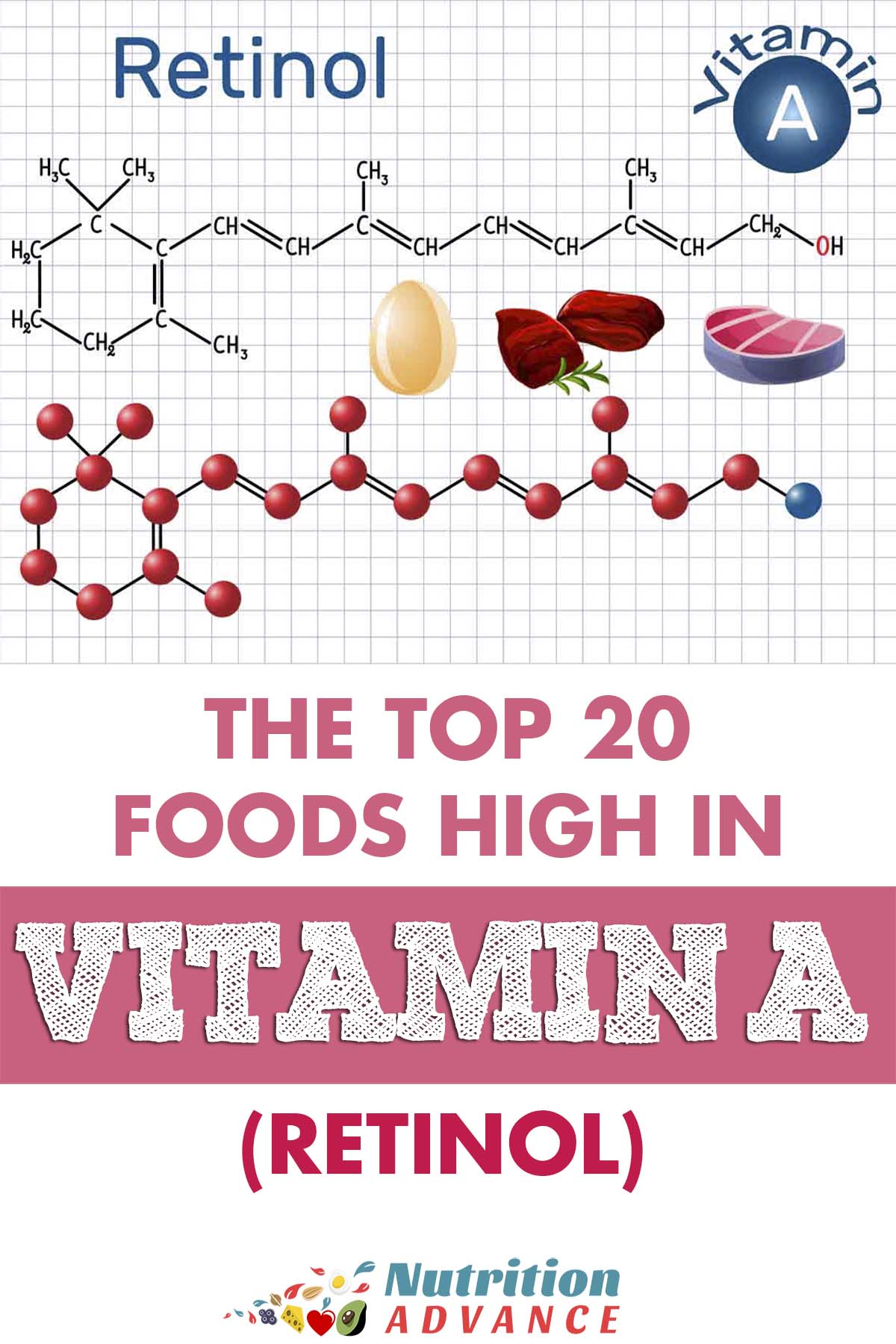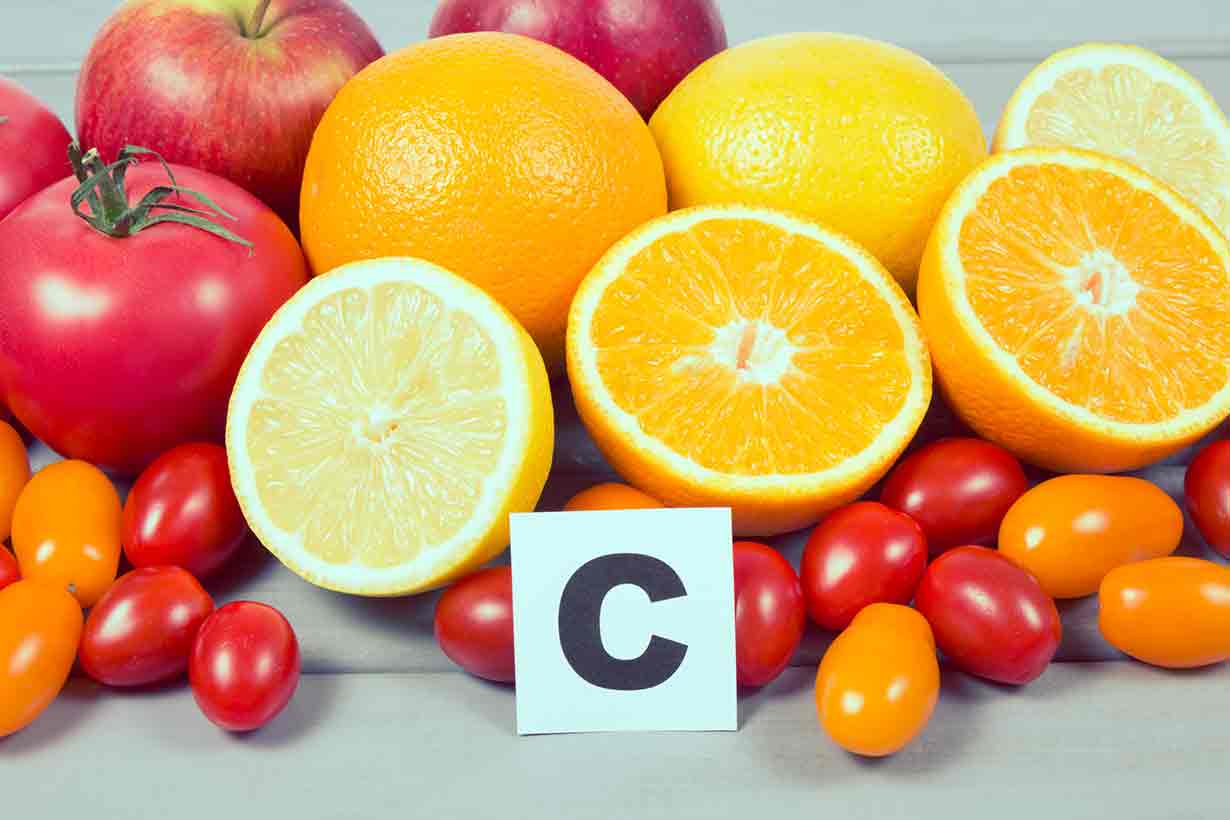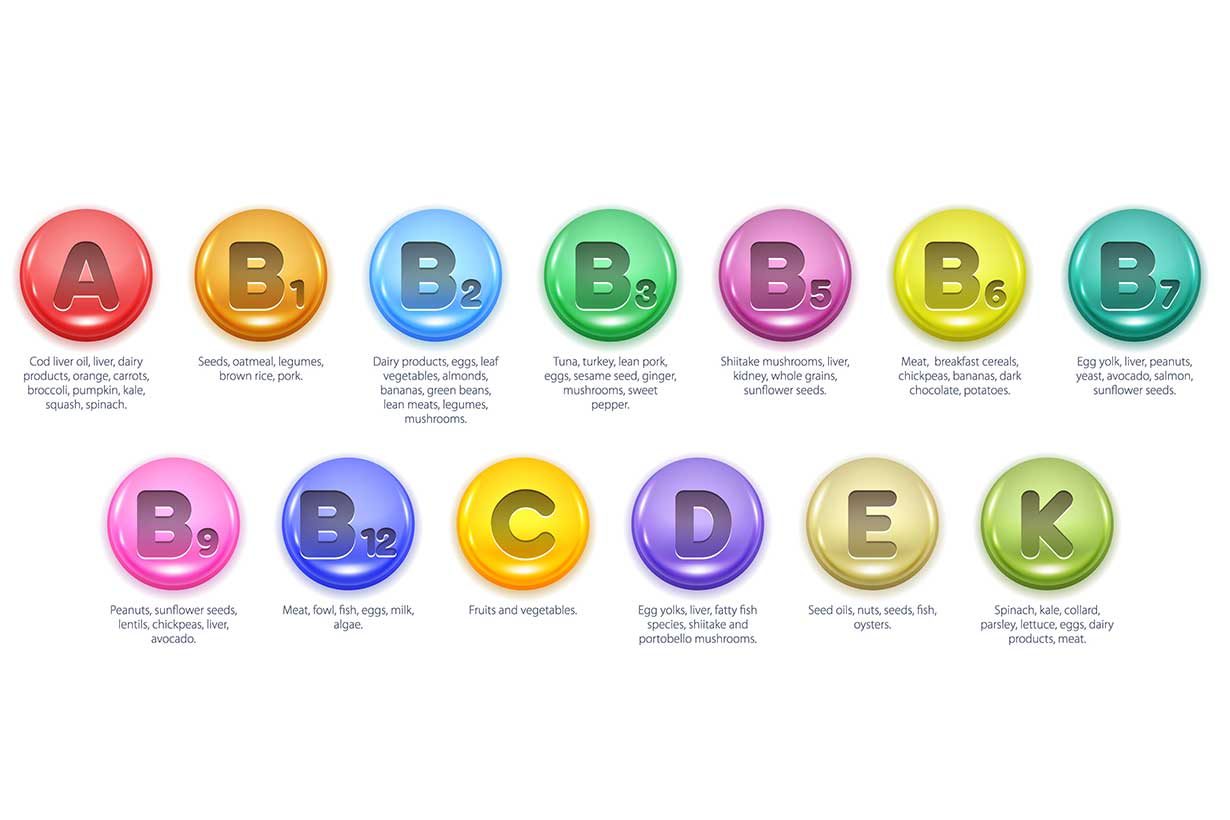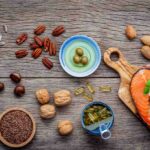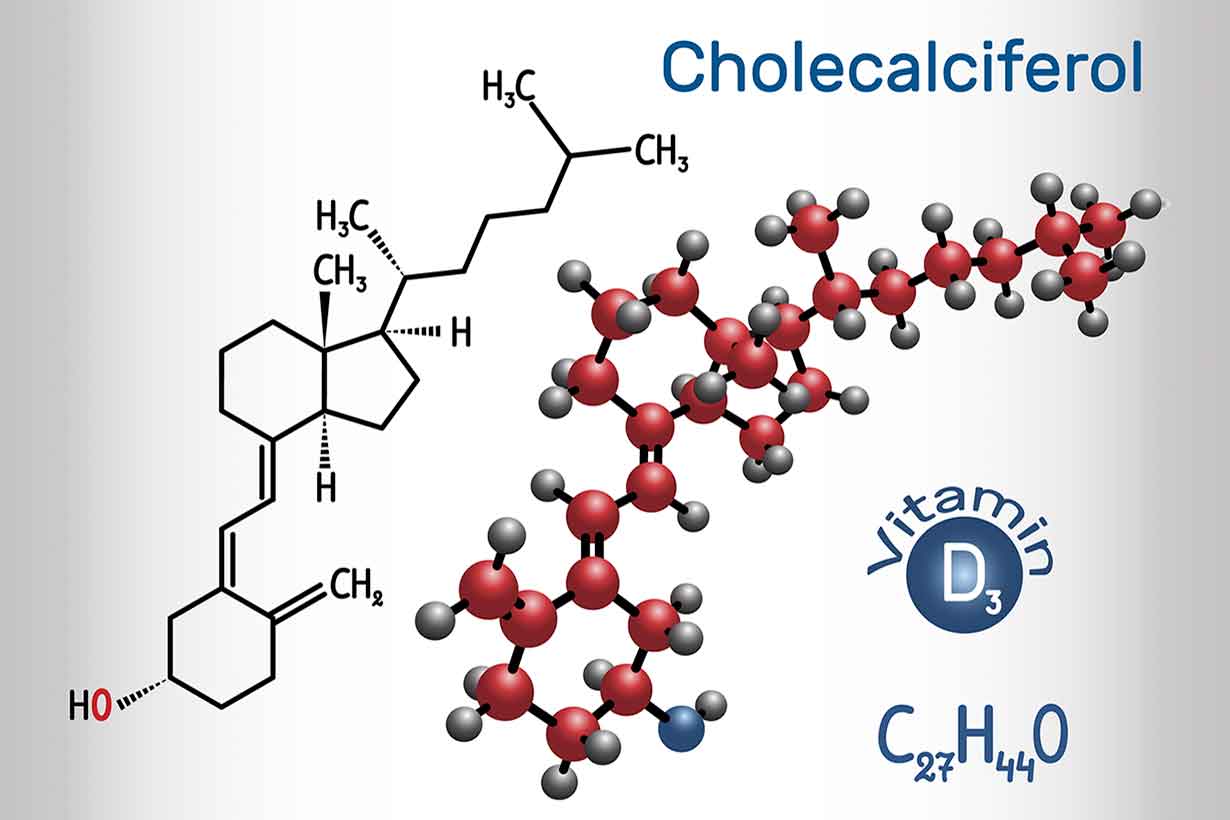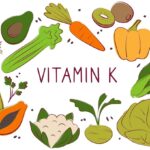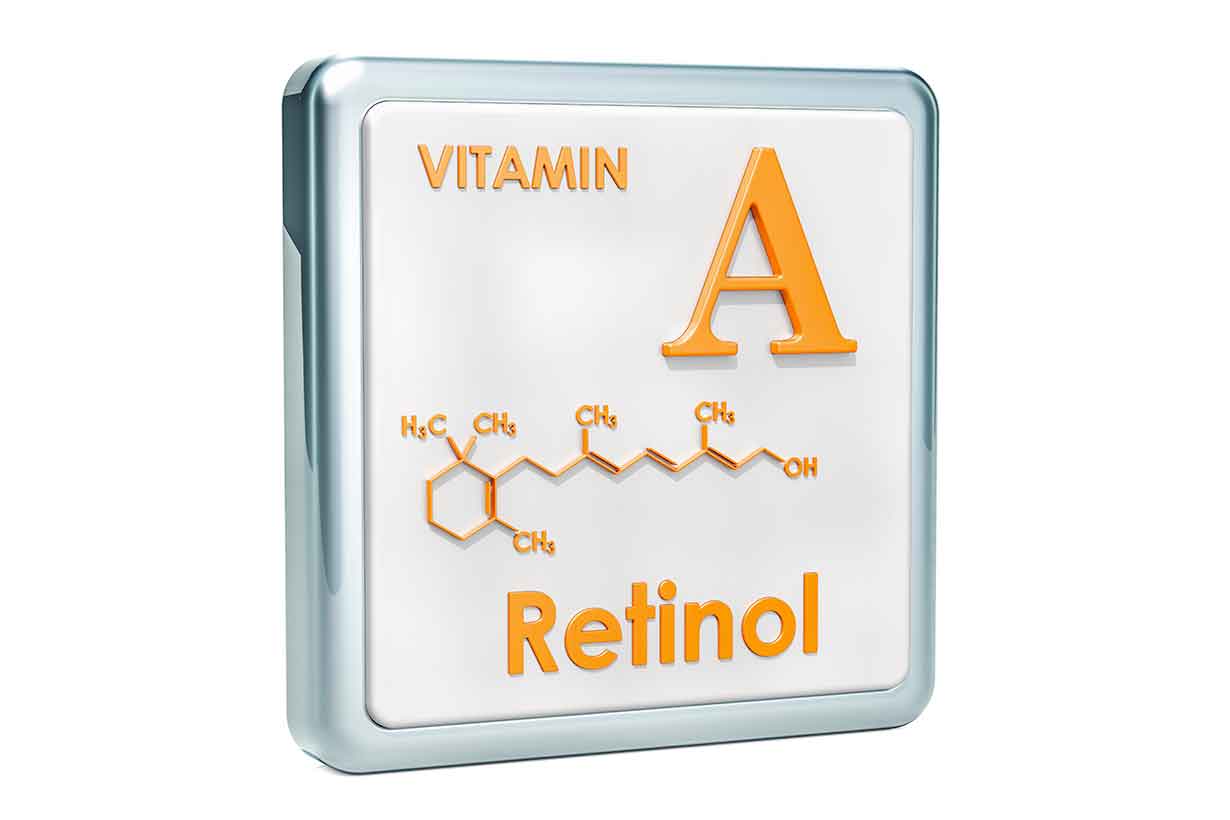Vitamin A is an essential fat-soluble vitamin with vital functions in the body.
This article provides a guide to the best dietary sources of vitamin A.
Types of Vitamin A

Vitamin A is one of the essential vitamins for human health, but there are two different ways we can get it from our diet (1):
- The first is by consuming animal foods that contain retinol, sometimes known as preformed vitamin A.” Retinol is a highly bioavailable form of vitamin A that the human body can use in its current form.
- Many plant foods contain carotenoids, which are sometimes called “provitamin A carotenoids.” The best sources of carotenoids are foods such as carrots and sweet potatoes. However, the human body needs to convert carotenoids into retinol before it can use them as vitamin A.
Preformed Vitamin A (Retinol) vs. Provitamin A (Carotenoids)
On the one hand, the conversion rate of carotenoids to retinol can be low and variable in humans. As a result, plant foods do not offer the same bioavailability as animal food sources of vitamin A (2).
On the other, some plant foods contain such significant amounts of carotenoids that the absolute amount of retinol they can convert to is very high.
Retinol Activity Equivalents (RAE)
Since retinol and carotenoids do not offer the same bioavailability, we can compare them in a more like-for-like manner by establishing their retinol activity equivalent (RAE), which takes bioavailability into account (3).
FDA guidelines state that 1 microgram (mcg) of retinol activity equivalent (RAE) is equivalent to (3):
- 1 mcg of retinol (found in animal foods)
- 12 mcg of beta-carotene (the most predominant carotenoid in plant foods)
- 24 mcg of other carotenoids (such as alpha-carotene) in plant foods
The retinol activity equivalent measurement allows us to directly compare how much vitamin A animal and plant foods contribute.
How Much Vitamin A Do We Need?
Recommended Dietary Allowances (RDAs)
Vitamin A has several important functions in the body.
The Food annd Nutrition Board of the National Academies of Sciences, Engineering, and Medicine has set recommended dietary allowances (RDAs) for vitamin A.
These RDAs depend on life stage and sex. They are shown in the table below (4):
| Life Stage | Male | Female |
|---|---|---|
| <6 months old | 400 mcg RAE | 400 mcg RAE |
| 7-12 months | 500 mcg RAE | 500 mcg RAE |
| 1-3 years | 300 mcg RAE | 300 mcg RAE |
| 4-8 years | 400 mcg RAE | 400 mcg RAE |
| 9-13 years | 600 mcg RAE | 600 mcg RAE |
| 14-18 years | 900 mcg RAE | 700 mcg RAE |
| >19 years old | 900 mcg RAE | 700 mcg RAE |
| During pregnancy (age <18 years) | 750 mcg RAE | |
| During pregnancy (age >19 years) | 770 mcg RAE | |
| Lactation (<18 years) | 1200 mcg RAE | |
| Lactation (>19 years) | 1300 mcg RAE |
Daily Values (% DV)
A simple ‘daily value’ (% DV) has also been set for vitamin A by the FDA, based on a typical 2000-calorie diet. The daily value for vitamin A is 900 mcg RAE (5).
Foods High In Vitamin A
The following section shows a list of foods with high vitamin A content. The amount of vitamin A per 100 grams and per typical serving is shown for each food.
The source of all nutritional data is the USDA FoodData Central database.
Daily values have been calculated using USDA data alongside the FDA’s published daily values.
1) Apricot (dried)
| Vitamin A (RAE) per 100 grams | Vitamin A (RAE) per 40g serving |
|---|---|
| 180 mcg (20% DV) | 72 mcg (8% DV) |
Apricots are one of the best fruit sources of vitamin A; a 40-gram serving provides 8% of the daily value (6).
2) Beet greens, cooked
| Vitamin A (RAE) per 100 grams | Vitamin A (RAE) per 150g cup |
|---|---|
| 325 mcg (36% DV) | 488 mcg (54% DV) |
Beet greens are a nutrient-rich leafy green and provide a good amount of vitamin A; a cup serving offers 54% of the daily value (7).
Beet greens are also an excellent source of vitamin K1, which is another fat-soluble vitamin.
See this guide to foods high in vitamin K1 for more information.
3) Bell pepper, red, raw
| Vitamin A per 100 grams | Vitamin A per 120g pepper |
|---|---|
| 157 mcg (17% DV) | 188 mcg RAE (21% DV) |
A typical 120-gram red bell pepper provides 21% of the daily value for vitamin A (8).
As well as being high in vitamin A, bell peppers are one of the best dietary sources of vitamin C.
4) Bok choy, cooked
| Vitamin A per 100 grams | Vitamin A per 170g cup |
|---|---|
| 212 mcg RAE (24% DV) | 360 mcg RAE (40% DV) |
Bok choy is a vitamin A-rich leafy green; a 170-gram cup serving offers 40% of the daily value (9).
5) Bran Flakes (fortified)
| Vitamin A per 100 grams | Vitamin A per 0.75 cup (30g) serving |
|---|---|
| 749 mcg RAE (83% DV) | 225 mcg RAE (25% DV) |
Many breakfast cereals are fortified with vitamins and minerals. Among these nutrients, vitamin A fortification is common.
A three-quarter cup (30-gram) serving of fortified bran flakes (POST brand) provides 25% of vitamin A’s daily value (10).
6) Broccoli raab, cooked
| Vitamin A per 100 grams | Vitamin A per 3 oz (85g) serving |
|---|---|
| 227 mcg RAE (25% DV) | 193 mcg RAE (21% DV) |
Broccoli raab is among the best vegetable sources of vitamin A, with a 3-ounce (85g) serving providing 21% of the daily value (11).
7) Butternut squash, cooked
| Vitamin A per 100 grams | Vitamin A per 205g cup |
|---|---|
| 558 mcg RAE (62% DV) | 1140 mcg RAE (127% DV) |
A 205-gram cup of cooked butternut squash offers 127% of the daily value for vitamin A (12).
8) Cantaloupe melon
| Vitamin A per 100 grams | Vitamin A per 160g cup |
|---|---|
| 169 mcg RAE (19% DV) | 270 mcg RAE (30% DV) |
Cantaloupe melon provides a good vitamin A source; each 160-gram cup serving contains 30% of the daily value (12).
9) Carrots, cooked
| Vitamin A per 100 grams | Vitamin A per 1/2 cup (78g) serving |
|---|---|
| 852 mcg RAE (95% DV) | 665 mcg RAE (74% DV) |
Carrots are one of the most significant dietary sources of vitamin A. A half-cup (78g) serving of cooked, sliced carrots provides 74% of the daily value (13).
10) Clams, cooked
| Vitamin A per 100 grams | Vitamin A per 3oz (85g) serving |
|---|---|
| 171 mcg RAE (19% DV) | 145 mcg RAE (16% DV) |
Seafood can offer vitamin A content, and clams are one type of seafood that provides a source. A three-ounce (85-gram) cup of cooked clams offers 16% of the daily value (14).
11) Collard greens, cooked
| Vitamin A per 100 grams | Vitamin A per 190g cup |
|---|---|
| 380 mcg RAE (42% DV) | 722 mcg RAE (80% DV) |
Collard greens are another leafy green vegetable with high vitamin A content; a 190g cup of cooked collard greens offers 80% of the daily value (15).
12) Cuttlefish, cooked
| Vitamin A per 100 grams | Vitamin A per 3oz (85g) serving |
|---|---|
| 203 mcg RAE (23% DV) | 173 mcg RAE (19% DV) |
A three-ounce (85g) serving of cooked cuttlefish provides 19% of the daily value for vitamin A (16).
13) Eggs, cooked
| Vitamin A per 100 grams | Vitamin A per large (50g) egg |
|---|---|
| 149 mcg RAE (17% DV) | 74.5 mcg RAE (8% DV) |
A few eggs can provide a substantial amount of vitamin A; a single large boiled egg offers 8% of the daily value (17).
14) Eel, cooked
| Vitamin A per 100 grams | Vitamin A per 159g fillet |
|---|---|
| 1140 mcg RAE (127% DV) | 1810 mcg RAE (201% DV) |
Eel is notably high in vitamin A; a 159-gram cooked fillet contains 201% of the daily value (18).
15) Greek yogurt
| Vitamin A per 100 grams | Vitamin A per 200g container |
|---|---|
| 90 mcg RAE (10% DV) | 180 mcg RAE (20% DV) |
Most milk products contain vitamin A, which is true of Greek yogurt. A 200-gram container provides 20% of the daily value (19).
16) Hard goat cheese
| Vitamin A per 100 grams | Vitamin A per ounce (28g) serving |
|---|---|
| 486 mcg RAE (54% DV) | 138 mcg RAE (15% DV) |
An ounce (28g) serving of hard goat cheese contains 15% of the daily value of vitamin A (20).
17) Kale, cooked
| Vitamin A per 100 grams | Vitamin A per 118g cup serving |
|---|---|
| 146 mcg RAE (16% DV) | 172 mcg RAE (19% DV) |
A 118-gram cup of cooked kale provides 19% of vitamin A’s daily value (21).
18) Liver, lamb, cooked
| Vitamin A per 100 grams | Vitamin A per 3oz (85g) serving |
|---|---|
| 7490 mcg RAE (832% DV) | 6370 mcg RAE (708% DV) |
Liver is the most significant dietary source of vitamin A.
Among the various types, lamb liver contains the highest concentrations; a three-ounce (85-gram) serving offers 708% of the daily value (22).
19) Liverwurst spread
| Vitamin A per 100 grams | Vitamin A per 1/4 cup (55g) serving |
|---|---|
| 4090 mcg RAE (454% DV) | 2250 mcg RAE (250% DV) |
Since the primary ingredient is liver, liverwurst spread also offers high vitamin A concentrations. A quarter-cup (55-gram) serving supplies 250% of the daily value (23).
20) Mustard greens, cooked
| Vitamin A per 100 grams | Vitamin A per 140g cup |
|---|---|
| 618 mcg RAE (69% DV) | 865 mcg RAE (96% DV) |
Mustard greens are another leafy green with high vitamin A content; a 140-gram cup provides 95% of the daily value (24).
21) Oysters, Eastern, canned
| Vitamin A per 100 grams | Vitamin A per 3oz (85g) serving |
|---|---|
| 90 mcg RAE (10% DV) | 76.5 mcg RAE (9% DV) |
Canned oysters offer moderate vitamin A; a three-ounce (85g) serving has 9% of the daily value (25).
22) Pink grapefruit
| Vitamin A per 100 grams | Vitamin A per 230-gram cup |
|---|---|
| 58 mcg RAE (6% DV) | 133 mcg RAE (15% DV) |
Pink grapefruit is another fruit source of carotenoids, providing a moderate amount of vitamin A. A 230-gram cup serving contains 15% of the daily value (26).
23) Pumpkin, cooked
| Vitamin A per 100 grams | Vitamin A per 230-gram cup |
|---|---|
| 433 mcg RAE (48% DV) | 996 mcg RAE (111% DV) |
Pumpkin is one of the best plant-based sources of vitamin A; a 230-gram cup of cooked pumpkin provides 111% of the daily value (27).
24) Rice milk, unsweetened
| Vitamin A per 100 grams | Vitamin A per 240g cup |
|---|---|
| 63 mcg RAE (7% DV) | 151 mcg RAE (17% DV) |
Like cereal products, many plant-based milk products are fortified with vitamin A.
Unsweetened rice milk contains 17% of the daily value of vitamin A (28).
25) Ricotta cheese
| Vitamin A per 100 grams | Vitamin A per 1/2 cup (124g) |
|---|---|
| 120 mcg RAE (13% DV) | 149 mcg RAE (17% DV) |
A half-cup (124g) serving of ricotta cheese provides 17% of the daily value for vitamin A (29).
26) Romaine lettuce, raw
| Vitamin A per 100 grams | Vitamin A per 47-gram cup |
|---|---|
| 436 mcg RAE (48% DV) | 205 mcg RAE (23% DV) |
A 47-gram cup of raw romaine lettuce leaves offers 23% of vitamin A’s daily value (30).
27) Skim milk
| Vitamin A per 100 grams | Vitamin A per 245g cup |
|---|---|
| 64 mcg RAE (7% DV) | 157 mcg RAE (17% DV) |
A 245-gram cup of skim milk offers 17% of the daily value for vitamin A (31).
28) Spinach, cooked
| Vitamin A per 100 grams | Vitamin A per 180g cup |
|---|---|
| 524 mcg RAE (58% DV) | 943 mcg RAE (105% DV) |
Spinach is one of the best green vegetables for vitamin A; a 180-gram cup of cooked spinach offers 105% of the daily value (32).
29) Sweet potatoes, cooked
| Vitamin A per 100 grams | Vitamin A per large (180g) potato |
|---|---|
| 961 mcg RAE (107% DV) | 1730 mcg RAE (192% DV) |
A typical large sweet potato (weighing 180 grams) provides 192% of the daily value for vitamin A (33).
30) Tuna, bluefin, cooked
| Vitamin A per 100 grams | Vitamin A per 3oz (85g) serving |
|---|---|
| 757 mcg RAE (84% DV) | 643 mcg RAE (71% DV) |
Tuna is a good source of vitamin A. Among tuna varieties, ‘bluefin’ offers the highest levels of the vitamin.
A three-ounce (85-gram) serving of cooked bluefin tuna provides 71% of the daily value for vitamin A (34).
Which Foods Provide the Most Vitamin A Per Serving?
This table directly compares the foods with the highest vitamin A content per typical serving.
| Rank | Food Name | Serving Size | Vitamin A Content |
|---|---|---|---|
| 1 | Liver, lamb, cooked | 3oz (85g) | 6370 mcg RAE (708% DV) |
| 2 | Liverwurst spread | 1/4 cup (55g) | 2250 mcg RAE (250% DV) |
| 3 | Eel, cooked | 159g fillet | 1810 mcg RAE (201% DV) |
| 4 | Sweet potatoes, cooked | Large potato (180g) | 1730 mcg RAE (192% DV) |
| 5 | Butternut squash, cooked | 205g cup | 1140 mcg RAE (127% DV) |
| 6 | Pumpkin, cooked | 230g cup | 996 mcg RAE (111% DV) |
| 7 | Spinach, cooked | 180g cup | 943 mcg RAE (105% DV) |
| 8 | Mustard greens, cooked | 140g cup | 865 mcg RAE (96% DV) |
| 9 | Collard greens, cooked | 190g cup | 722 mcg RAE (80% DV) |
| 10 | Carrots, cooked | 1/2 cup (78g) | 663 mcg RAE (74% DV) |
| 11 | Tuna, bluefin, cooked | 3oz (85g) | 643 mcg RAE (71% DV) |
| 12 | Beet greens, cooked | 150g cup | 488 mcg RAE (54% DV) |
| 13 | Bok choy, cooked | 170g cup | 360 mcg RAE (40% DV) |
| 14 | Cantaloupe melon | 160g cup | 270 mcg RAE (30% DV) |
| 15 | Bran Flakes (fortified) | 3/4 cup (30g) | 225 mcg RAE (25% DV) |
| 16 | Romaine lettuce, raw | 47g cup | 205 mcg RAE (23% DV) |
| 17 | Broccoli raab | 3oz (85g) | 193 mcg RAE (21% DV) |
| 18 | Bell pepper, red, raw | 120g pepper | 188 mcg RAE (21% DV) |
| 19 | Greek yogurt | 200g container | 180 mcg RAE (20% DV) |
| 20 | Cuttlefish, cooked | 3oz (85g) | 173 mcg RAE (19% DV) |
| 21 | Kale, cooked | 118g cup | 172 mcg RAE (19% DV) |
| 22 | Skim milk | 245g cup | 157 mcg RAE (17% DV) |
| 23 | Rice milk, unsweetened | 240g cup | 151 mcg RAE (17% DV) |
| 24 | Ricotta cheese | 1/2 cup (124g) | 149 mcg RAE (17% DV) |
| 25 | Clams, cooked | 3oz (85g) | 145 mcg RAE (16% DV) |
| 26 | Hard goat cheese | 1 ounce (28.35g) | 138 mcg RAE (15% DV) |
| 27 | Pink grapefruit | 230g cup | 133 mcg RAE (15% DV) |
| 28 | Oysters, Eastern, canned | 3oz (85g) | 76.5 mcg RAE (9% DV) |
| 29 | Eggs, cooked | Large egg (50g) | 74.5 mcg RAE (8% DV) |
| 30 | Apricot (dried) | 40g serving | 72 mcg RAE (8% DV) |
Final Thoughts
This guide shows that numerous foods are high in vitamin A from animal and plant sources.
One additional point to consider is that consuming carotenoids alongside a source of fat can increase the absorption rate (35).
Consuming vegetables cooked with a bit of oil or with oily fish or avocado can provide ample dietary fat for this purpose.
For more vitamin lists, see this guide to foods high in vitamin E.

